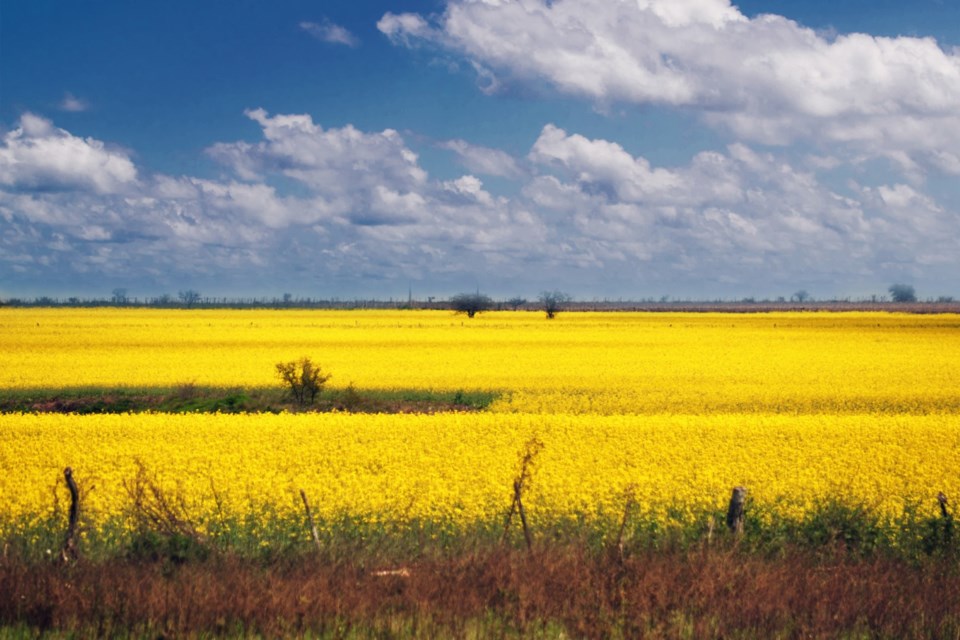WESTERN PRODUCER — The holidays are over and it’s time to assess what happened in world crop markets while we were focused on turkey, presents and merry making.
Judging by crop futures, the trend of prices slowly grinding lower has continued.
And looking at Canadian crop exports, the trend of strong wheat shipments but slow canola movement continues.
小蓝视频 American crop weather, which is often an important market mover at this time of year, in December continued its trend of good moisture in Argentina and southern Brazil but dryness in central and northern Brazil.
But as January began, dry areas of Brazil enjoyed much-needed showers, causing the trade to think that the rain would limit the decline in yields.
It is still too early to be definitive on Brazil’s soybean crop. It has a long season and it was particularly extended this year.
Some fields were planted in early September.
But because of hot, dry weather in October and November, some farmers delayed seeding while others were forced to reseed. In some states, farm groups received government approval to extend seeding deadlines to Jan. 13, even as some early planted crops were 小蓝视频 combined.
In early December the U.S. Department of Agriculture’s monthly supply and demand report forecast Brazil’s soy production at 161 million tonnes, down from 163 million in November but still higher than last year’s 158 million.
But as the month progressed, forecasters in Brazil issued their outlooks, which were all lower than the USDA’s.
Local forecasts are now in the range of 150 to 155 million, and poor results from harvest of early planted crops, which suffered through the hottest, driest days, have many farmers in a negative mood.
Rain now would help later seeded crops, but longer-term forecasts show the second half of January and February could turn dry again.
More dry weather and late harvest of reseeded soybeans would also push back the seeding of Brazil’s second corn crop, which goes in the ground after soybean harvest, potentially hurting its yield prospects.
But in Argentina, growing conditions are good with lots of rain in December.
The USDA’s early December report put Argentina’s soy crop at 48 million tonnes, up from the drought-ravaged 25 million tonne crop produced last year.
With continuing good weather, production prospects might creep higher, partly offsetting Brazil’s declines.
As noted, last week’s rain in Brazil weighed down soybean, soy oil and canola prices.
Canola is also suffering from slow exports.
Agriculture Canada’s forecast for whole year exports is 7.7 million tonnes. The week ending Dec. 31 was Week 22 of the crop year, or 42.3 percent of the crop year.
That means 42.3 percent of 7.7 million tonnes, or 3.26 million tonnes, should have been exported by this point, if we assume a steady export pace.
However, only 2.51 million tonnes had been exported, according to the Canadian Grain Commission. The export pace will have to increase if the 7.7 million tonne forecast is to be realized.
Luckily, domestic crush is running at the pace necessary to achieve the forecast of 10.5 million tonnes for the year.
Meanwhile, Canadian wheat exports continue to set a record pace. The grain commission says wheat exports stood at 9.1 million tonnes by the end of Week 22. That is a million tonnes more than last year at the same point and easily on pace to reach the full year export forecast of 20 million tonnes.
In an earlier column I wondered who was buying this wheat and noted news wire reports that China was active in the market.
But the monthly export destination report from the grain commission for November, the most recent available, shows Canadian wheat exports are broadly dispersed.
China is still the top wheat buyer with almost a million tonnes purchased, but that is down more than 350,000 tonnes from the pace last year.
However, buyers in the August-to-November quarter total almost 50. Colombia and Nigeria are significant buyers, along with long-time customers such as Japan and Indonesia. The United States and Mexico also have bought more than they did last year.
While Canada’s wheat export pace is good, it is not offsetting the general slow grind down of global wheat prices.
Getting back to oilseeds, another factor that might weigh on soybeans and oilseeds generally is the trouble in China’s pork market.
There is a surplus of pork in the world’s largest consuming country. Chinese retail pork prices in November were down almost 32 percent from the previous year.
A long period of negative margins has pig producers culling herds, adding to the pork glut.
A major motivation for China’s soybean imports is to feed its hog herd. As the herd contracts, demand for imported soybeans will likely weaken a little.
However, the steadily rising demand from North American crushers to produce vegetable oil for renewable diesel could offset any weakness in the export market.




